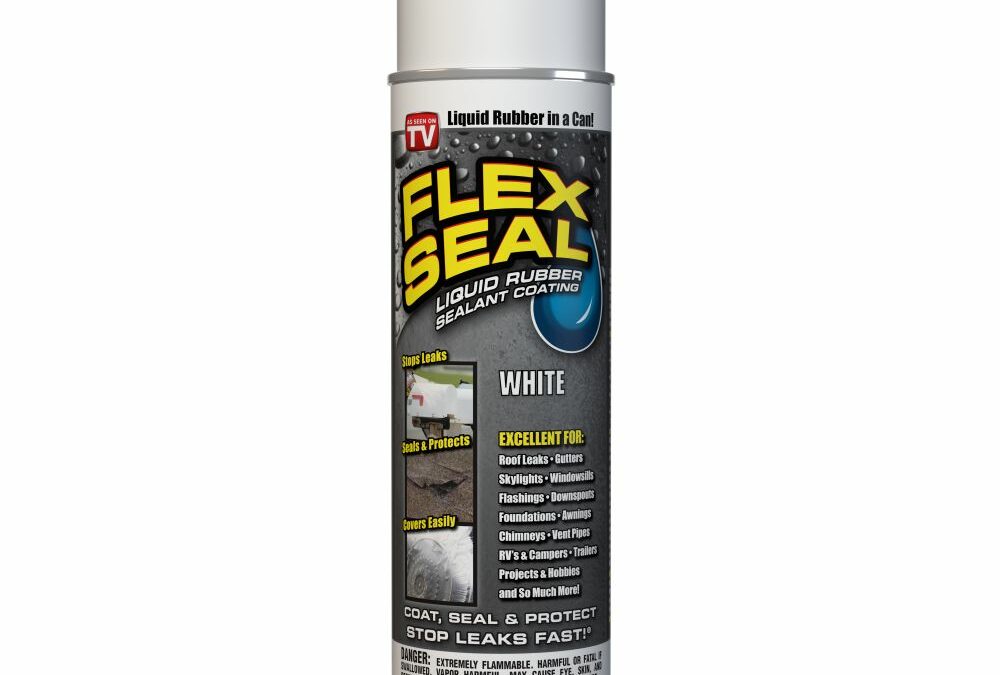Flex Seal Spray and Liquid are two popular products known for their versatility and effectiveness in sealing leaks and cracks. In this article, we will conduct a comprehensive analysis to determine which is the superior option. By examining their application methods, coverage, durability, and overall performance, we aim to provide you with the necessary insights to make an informed decision. Whether you are a homeowner or a professional contractor, this article will assist you in choosing the most suitable Flex Seal product for your specific needs.
Flex Seal Spray vs Liquid: A Comprehensive Analysis
Flex Seal is a popular brand known for its innovative sealant products. Two of its most famous offerings are Flex Seal Spray and Flex Seal Liquid. Both options provide effective sealing solutions, but they differ in terms of application, performance, ease of use, cost, versatility, convenience, safety considerations, and customer reviews. In this comprehensive analysis, we will explore the key factors to consider when choosing between Flex Seal Spray and Flex Seal Liquid.
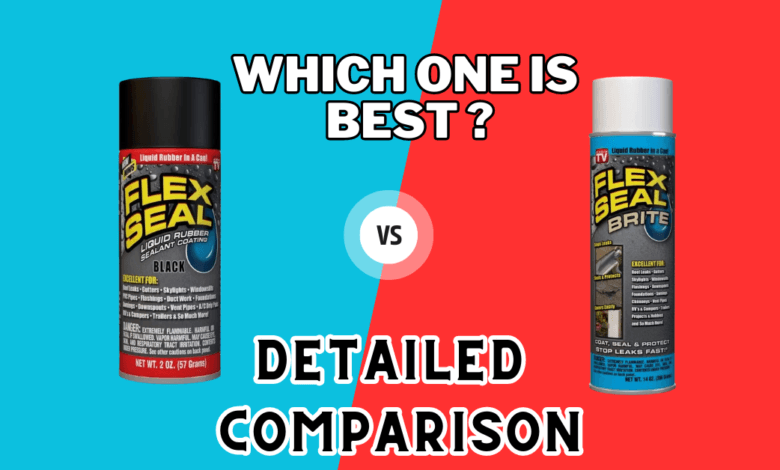
This image is property of tobindit.com.
1. Overview of Flex Seal Spray and Liquid
1.1 What is Flex Seal Spray?
Flex Seal Spray is a liquid rubber sealant that comes in an aerosol can. It is designed to coat, seal, and protect various surfaces from leaks, cracks, and damages. The spray formula allows for easy application and provides a flexible barrier that prevents water, air, and moisture from seeping through.
1.2 What is Flex Seal Liquid?
Flex Seal Liquid, on the other hand, is a thick, liquid sealant that can be applied using a brush, roller, or sprayer. It dries to form a durable, rubberized coating that creates a watertight and weatherproof seal. The liquid formula is ideal for larger and more complex projects that require a more precise and controlled application.
1.3 Application Differences
The main difference between Flex Seal Spray and Flex Seal Liquid lies in their application methods. While the spray is suitable for quick and easy spot repairs, the liquid provides greater control and coverage for larger areas. The choice between the two largely depends on the size and nature of the project at hand.
2. Performance and Effectiveness
2.1 Sealing Capability
Both Flex Seal Spray and Flex Seal Liquid are known for their excellent sealing capabilities. They are effective in sealing leaks, cracks, and gaps on a wide range of surfaces, including metal, plastic, wood, and concrete. The rubberized coating created by both products provides a watertight seal that prevents moisture and air infiltration.
2.2 Durability
When it comes to durability, Flex Seal Liquid often has an advantage over Flex Seal Spray. The liquid sealant creates a thicker and more resilient coating, which can withstand greater impacts and resist wear and tear over time. However, for minor repairs and temporary fixes, the spray option may suffice.
2.3 Weather Resistance
Both Flex Seal Spray and Flex Seal Liquid offer excellent weather resistance. They can withstand extreme temperatures, UV exposure, and various weather conditions without deteriorating or losing their sealing properties. Whether used indoors or outdoors, both options provide reliable protection against water damage, rust, and other environmental factors.
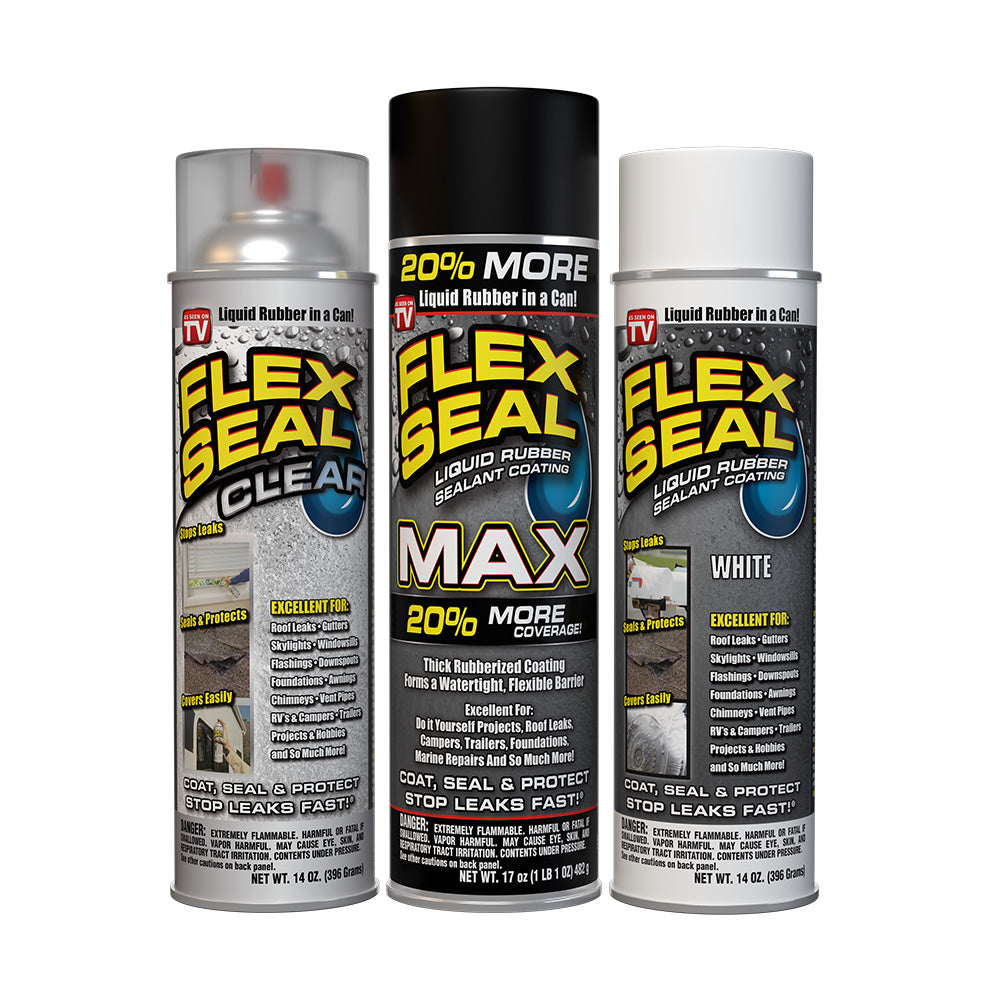
This image is property of flexsealproducts.com.
3. Ease of Use
3.1 Application Process
Flex Seal Spray and Flex Seal Liquid differ in terms of their application processes. The spray is incredibly easy to use, as it requires simply pointing and spraying the affected area. It provides quick coverage and dries relatively fast. On the other hand, using the liquid sealant may require more preparation, such as masking off surrounding areas, and using brushes or rollers for application. The liquid takes longer to dry, allowing for better workability and repositioning if needed.
3.2 Drying Time
Regarding drying time, Flex Seal Spray has the advantage of drying quickly, often within a matter of minutes, depending on environmental conditions. This fast-drying feature makes it ideal for immediate repairs or situations where time is a constraint. Flex Seal Liquid, on the other hand, takes longer to dry, typically requiring 24-48 hours for full curing and achieving maximum effectiveness.
3.3 Coverage Area
When it comes to coverage area, Flex Seal Spray offers a more convenient option. The aerosol can allows for a wider spray pattern, covering larger areas in less time. However, the liquid sealant provides a thicker and more substantial coating, which may require fewer layers and touch-ups to achieve complete coverage. The choice between the two depends on the size and scope of the project.
4. Cost and Value
4.1 Price Comparison
In terms of pricing, Flex Seal Spray is generally more cost-effective compared to Flex Seal Liquid. The aerosol canisters tend to be more affordable, and they provide a ready-to-use solution for quick repairs. On the other hand, Flex Seal Liquid may be pricier due to its larger volume and versatility in handling more extensive projects. It is important to consider the size of the project and the amount of sealant needed when comparing prices.
4.2 Cost-effectiveness
The cost-effectiveness of Flex Seal Spray and Flex Seal Liquid depends on the specific requirements of the project. While the spray may be cheaper initially, it may require multiple coats or more frequent reapplications for long-lasting results. The liquid, although pricier, provides a more robust and durable seal, potentially reducing the need for future repairs or replacements. Evaluating long-term costs and expected lifetime can help determine which option offers better value.
4.3 Long-term Value
In terms of long-term value, Flex Seal Liquid often outperforms Flex Seal Spray. Its more substantial and durable coating can provide extended protection and prevent recurring leaks or damages. Investing in the liquid sealant may prove more cost-effective over time, considering reduced repair and maintenance expenses.
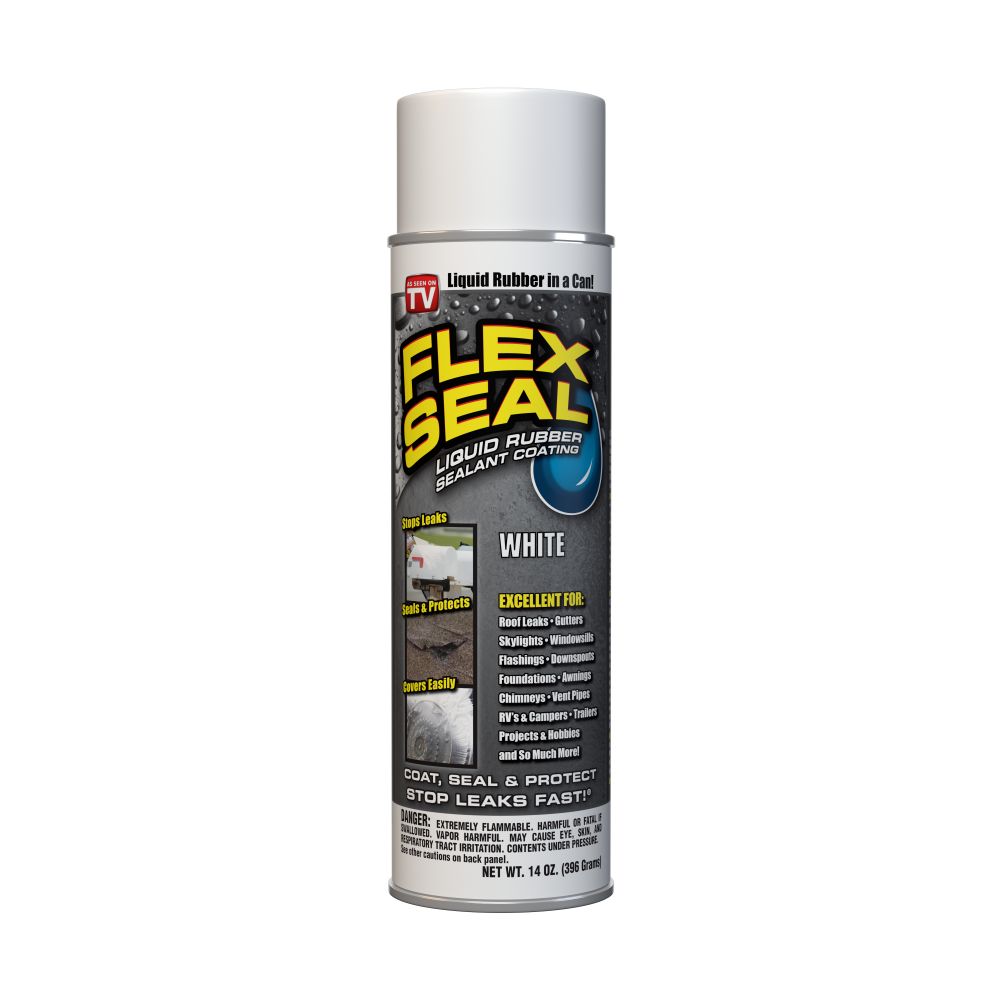
This image is property of flexsealproducts.com.
5. Versatility
5.1 Suitable Surfaces
Both Flex Seal Spray and Flex Seal Liquid are versatile products suitable for a wide range of surfaces. They can adhere to various materials, including metal, wood, plastic, fabric, and concrete. Whether it’s fixing a leaky pipe, sealing a crack in a roof, or repairing a damaged garden hose, both options prove effective in creating a durable and waterproof seal.
5.2 Indoor vs Outdoor Applications
When considering the suitability for indoor versus outdoor applications, both Flex Seal Spray and Flex Seal Liquid can be used in either setting. However, the liquid sealant’s versatility makes it particularly useful for larger outdoor projects, such as sealing a roof or waterproofing a foundation. The spray, on the other hand, is often preferred for smaller indoor repairs due to its ease of use and quick drying time.
5.3 Flexibility
Flex Seal Spray and Flex Seal Liquid both provide a flexible and elastic rubberized coating upon drying. This flexibility allows the sealant to expand and contract with temperature changes and movement, preventing cracks and maintaining the integrity of the seal over time. Whether dealing with extreme temperatures or vibrations, both options can withstand the rigors of everyday use.
6. Convenience and Accessibility
6.1 Availability
Both Flex Seal Spray and Flex Seal Liquid are widely available online and in various retail stores. They can be easily purchased from the manufacturer’s website, major online retailers, or local hardware stores. The accessibility of these products ensures that they are readily obtainable for any repair or sealing needs.
6.2 Packaging
Flex Seal Spray comes in an aerosol can, providing convenient and mess-free application. The cans are lightweight and easy to handle, allowing for precise spraying. Flex Seal Liquid is typically packaged in containers with lids, allowing for controlled pouring or dipping of brushes or rollers, depending on the preferred application method.
6.3 Portability
Both Flex Seal Spray and Flex Seal Liquid are portable options. The aerosol cans are compact and can be easily carried to different locations, making them suitable for on-the-go repairs. The liquid sealant can be transferred into smaller containers for increased portability or stored in its original packaging for use in larger projects.
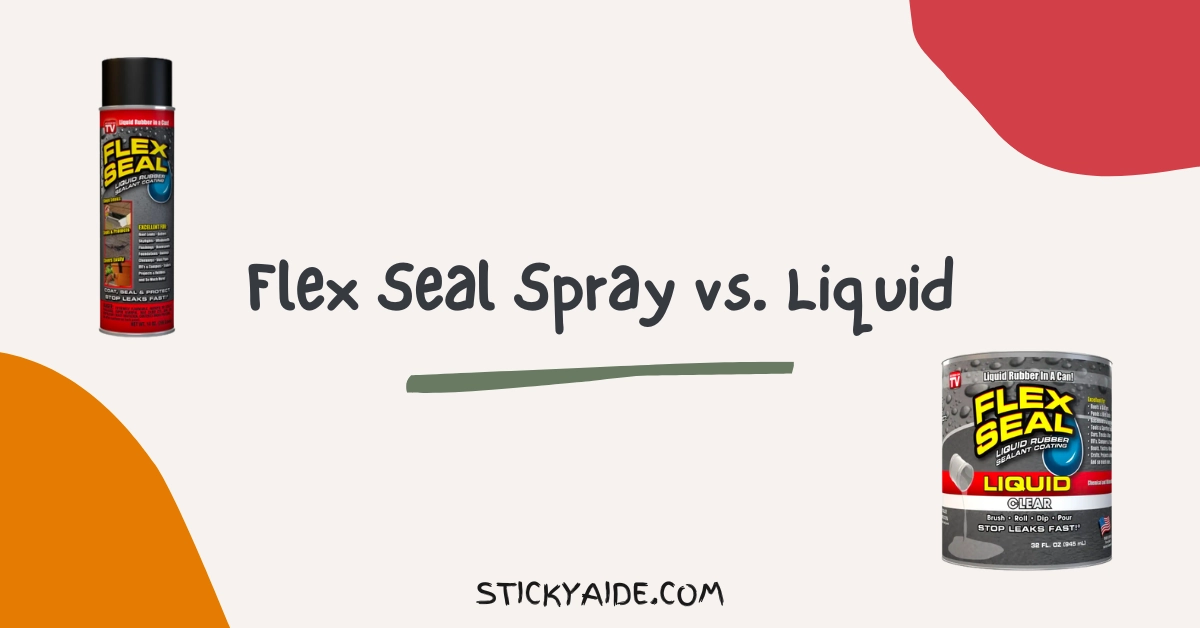
This image is property of www.stickyaide.com.
7. Safety Considerations
7.1 Health Hazards
When using any sealant product, it is essential to consider health hazards. Both Flex Seal Spray and Flex Seal Liquid contain chemicals that may have associated risks. It is recommended to use these products in well-ventilated areas and to wear appropriate protective gear, such as gloves and goggles, to minimize potential health hazards. Following the manufacturer’s safety instructions is crucial for safe use.
7.2 Application Precautions
Certain precautions should be taken when applying Flex Seal Spray and Flex Seal Liquid. While both products are generally safe for use, it is important to avoid contact with eyes, skin, and clothing. Adequate surface preparation, such as cleaning and drying, is necessary for optimal adhesion. Following the manufacturer’s guidelines and precautions ensures the best outcomes.
7.3 Compatibility with Other Materials
Before applying Flex Seal Spray or Flex Seal Liquid, it is important to consider compatibility with other materials. These sealants may not adhere effectively to certain surfaces or coatings, such as silicone-based products, highly textured surfaces, or heavily greased areas. Testing a small inconspicuous area before full application can help determine compatibility and avoid any unexpected issues.
8. Customer Reviews and Ratings
8.1 User Satisfaction
Customer reviews and ratings provide valuable insights into the performance and satisfaction levels associated with Flex Seal Spray and Flex Seal Liquid. User satisfaction often depends on the specific application, ease of use, durability, and long-term effectiveness. While individual experiences may vary, both products generally receive positive reviews for their sealing capabilities and versatility.
8.2 Complaints and Issues
Some common complaints and issues associated with Flex Seal Spray and Flex Seal Liquid relate to the coverage area, drying time, and the need for multiple coats. It is important to consider these factors, as well as individual project requirements, to ensure the most suitable choice. Reading and analyzing customer feedback can help gain a better understanding of potential drawbacks and limitations.
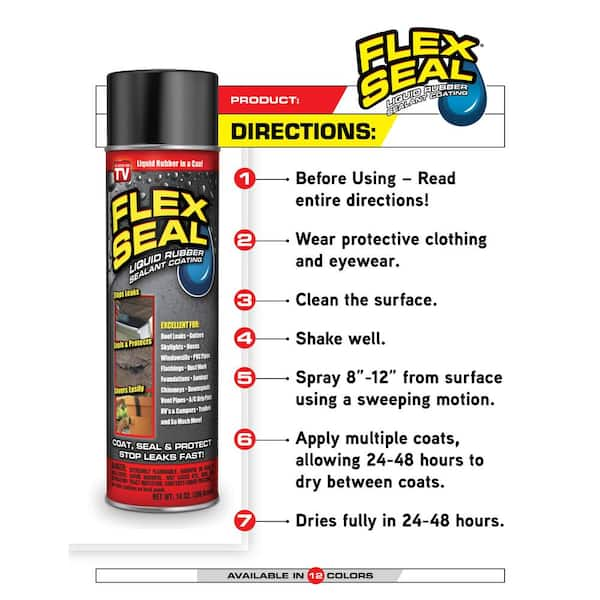
This image is property of images.thdstatic.com.
10. Conclusion
10.1 Final Recommendation
In conclusion, both Flex Seal Spray and Flex Seal Liquid offer effective solutions for sealing leaks, cracks, and gaps. Flex Seal Spray is a convenient option for quick repairs and smaller projects, offering ease of use and fast drying time. However, for larger and more complex applications, Flex Seal Liquid provides superior durability and coverage. It is recommended to assess project requirements, budget, and specific needs to determine the best choice between Flex Seal Spray and Flex Seal Liquid.
10.2 Application Tips
When using Flex Seal Spray or Flex Seal Liquid, here are some application tips to achieve optimal results:
- Clean and dry the surface thoroughly before applying the sealant.
- Use masking tape or drop cloths to protect surrounding areas.
- Apply multiple thin coats for better coverage and adhesion.
- Allow sufficient drying or curing time before subjecting the sealant to water or other stresses.
- When using Flex Seal Liquid, apply evenly with brushes or rollers for a uniform coating.
- It is always recommended to read and follow the manufacturer’s instructions for the best outcomes.
Remember, proper application and preparation are key to achieving a durable and long-lasting seal with either Flex Seal Spray or Flex Seal Liquid.


